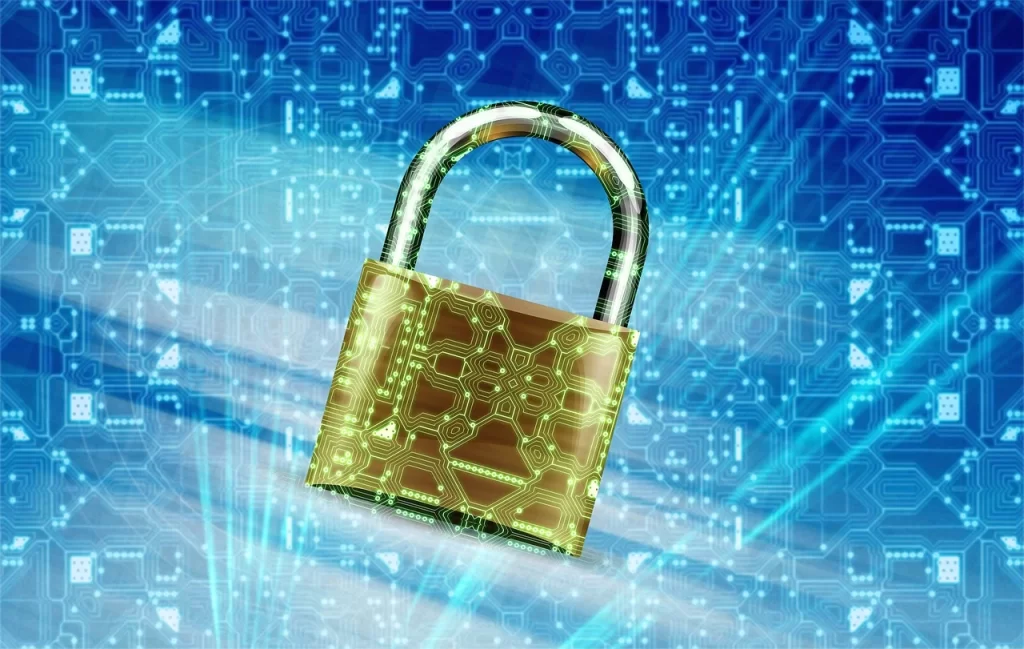Homeowners who invest in metal buildings do so for many reasons. The durability, low maintenance, and long lifespan of metal structures make them a practical choice.
Still, even a well-constructed metal building can be vulnerable to security threats if it lacks a dependable home security system.
Metal buildings can be used for a variety of purposes, including living spaces, storage, workshops, and even offices. Each of these uses comes with unique security needs.
Understanding what features to look for in a security system will ensure that the investment remains safe from theft, vandalism, and unauthorized access.
Comprehensive Surveillance Coverage
A critical feature to look for in any home security system is comprehensive surveillance coverage. This includes high-definition cameras that monitor all entry points, perimeters, and blind spots. Cameras should provide clear images in daylight and low-light conditions. Infrared or night vision capabilities are essential, particularly in rural or dimly lit locations. Additionally, the security system should include motion detection features that alert you when unusual activity occurs.
The ability to access camera footage remotely is no longer a luxury. Look for systems that offer real-time video streaming through a mobile app or web platform. This capability allows you to monitor your property from any location. It also enables you to check alerts or unusual activity in real-time. Another feature to consider is cloud storage for footage, which ensures that recordings are not lost due to tampering or hardware failure.
Reliable Entry Point Protection
Every metal building has entry points that need monitoring, including doors, windows, and any other possible access locations. A robust security system should include sensors on all these points. These sensors should alert you to any unauthorized attempts to open or force entry through them. Magnetic contact sensors are commonly used and can be very effective.
Glass break detectors are another component that should be considered if the metal building has windows or glass doors. These sensors are designed to recognize the specific sound of breaking glass and send an alert immediately. This allows you to respond quickly before a thief can get very far.
Smart locks also play a role in securing entry points. Traditional locks can be vulnerable to picking or physical tampering. Smart locks offer advanced security features like remote locking and unlocking, access logs, and the ability to assign temporary codes for guests or service providers.
Alarm System Integration
An audible alarm remains one of the most effective deterrents against intruders. Look for a security system that includes a reliable alarm feature that triggers during a breach. The alarm should be loud enough to alert neighbors and potentially scare off intruders before they can complete their objective.
The alarm system should be connected to the main control panel and integrated with your mobile device. This way, if the alarm is triggered, you receive an immediate notification. Some systems allow you to disarm the alarm remotely or verify a false alarm with a few taps on your smartphone.
Another consideration is whether the alarm system can be linked to an external monitoring service. Professional monitoring adds another layer of security. When an alert is triggered, trained personnel can verify the threat and contact local authorities on your behalf, ensuring a rapid response.
Environmental Hazard Detection
While most people associate home security with theft prevention, environmental hazards can pose just as much of a threat. Fires, floods, and gas leaks can all damage a metal building and endanger its occupants or contents. A reliable security system should include sensors that detect smoke, heat, carbon monoxide, and water leaks.
Smoke detectors are a must-have, especially if the metal building includes a kitchen or heating appliances. Heat detectors can be valuable in areas where smoke might not be present but where temperature increases indicate a fire risk. Carbon monoxide detectors are crucial if the building contains fuel-burning equipment or is attached to a garage.
Water sensors should be placed near pipes, water heaters, and other plumbing fixtures. Even though metal buildings are less prone to structural damage from water, moisture can still ruin stored items, damage electrical systems, and lead to mold.
Smart Home Integration
As home automation technology becomes more accessible, integrating your security system with smart home features is increasingly practical. A security system that communicates with other smart devices can create a more seamless and responsive setup. This integration can include smart lighting, which turns on when motion is detected or during scheduled hours to simulate occupancy.
Voice control through digital assistants allows for hands-free operation. You can arm or disarm your system, lock doors, or check security camera feeds using voice commands. Smart thermostats and lighting systems can also be programmed to respond to security events, such as turning off appliances when the alarm is triggered or adjusting settings when you leave the building.
The ability to set automation routines can greatly enhance the effectiveness of your security system. For example, when you activate the “away” mode, your doors can lock, the alarm can arm, cameras can begin recording, and lights can follow a preset schedule. These features make it more difficult for intruders to determine if the building is occupied.
Scalability and Customization
Every metal building is different. A security system that works for a small garage or workshop may not be suitable for a larger structure used as a living space or commercial storage area. Scalability is an important factor to consider. Look for systems that allow you to add new components as your needs evolve.
Some security systems offer modular designs. You can start with a basic setup that includes door sensors and a few cameras, then expand it over time to include smart locks, motion detectors, and environmental sensors. This flexibility ensures that your system can grow alongside your metal building’s function.
Customization is another key feature. The ability to tailor alerts, notification settings, camera angles, and sensor placement allows you to focus on what matters most. If certain areas of your property are more vulnerable than others, you can give those locations greater attention and monitoring.
Secure and User-Friendly Control Panel
The control panel acts as the command center for your entire security system. It must be both secure and user-friendly. Modern control panels often include touchscreens with intuitive interfaces. You should be able to arm and disarm the system, view camera feeds, receive alerts, and access settings with ease.
Two-factor authentication and password protection are important features that protect the system from unauthorized access. Some control panels also offer voice prompts and guided instructions for users who are less tech-savvy.
A mobile application that mirrors the functionality of the control panel is also important. It gives you control when you are away from the building. A good app will provide real-time alerts, allow you to review activity logs, and control your system remotely.
Power Backup and Redundancy
Security systems are only useful when they are operational. One of the most overlooked features is a reliable backup power source. In the event of a power outage, your system should be able to function without interruption. Look for systems that include battery backups capable of sustaining operations for several hours or more.
In addition to battery backups, redundancy in communication methods is essential. Your system should be able to send alerts through multiple channels. These can include Wi-Fi, cellular, and landline connections. If one method fails, the system can switch to another to ensure that alerts are delivered.
Systems that include tamper detection and fail-safes are also valuable. These features alert you if someone attempts to disable or damage the control panel, cameras, or sensors. This gives you time to respond before a security breach occurs.
Privacy and Data Protection
As more security systems rely on cloud storage and internet connectivity, privacy and data protection have become critical concerns. It is important to select a system that encrypts data transmissions to protect against hacking and unauthorized access.
Review the provider’s data handling policies. Make sure they do not share your information with third parties without your consent. Some systems allow you to store footage locally on an encrypted hard drive or SD card, giving you complete control over your recordings.
Password protection and user management features should be available. These allow you to limit access to specific users and track activity across multiple accounts. Systems that offer biometric access, such as fingerprint or facial recognition, provide an additional layer of security.
Customer Support and System Maintenance
The security system you choose should come with dependable customer support. Installing, configuring, and maintaining a complex system can present challenges. Providers who offer 24/7 technical assistance, detailed installation guides, and user-friendly troubleshooting resources make it easier to keep your system running smoothly.
Many modern systems offer software updates that include new features or security patches. These updates should be delivered automatically and regularly. You want a provider that remains committed to improving and supporting its product long after the initial purchase.
Some companies offer ongoing maintenance services or monitoring subscriptions. These services often include regular system checks, battery replacements, and performance optimization. Having professional support ensures that your system remains reliable over time.
Cost and Value Assessment
Security systems range in price depending on features, size, and installation method. While cost is always a consideration, the focus should remain on value. A cheaper system that lacks essential features or fails to offer reliable protection may end up costing more in the long run due to losses from a security breach.
Evaluate your budget against your security needs. Determine the most critical features for your metal building and ensure the system you select includes them. Consider long-term costs as well, such as subscription fees for monitoring services or cloud storage.
Purchasing a security system should be viewed as an investment in peace of mind. A high-quality system tailored to your building’s layout and usage will provide better protection and fewer headaches over time.
Installation and Ease of Use
Some systems require professional installation, while others are designed for easy do-it-yourself setup. If you are comfortable with technology and want to save on installation fees, a DIY system may be sufficient. These typically come with adhesive-backed sensors and step-by-step instructions.
Professional installation may be preferable for more complex systems or larger metal buildings. Installers can ensure that all components are properly placed and functioning. They may also offer training to help you get the most from your system.
Ease of use is essential no matter how the system is installed. The interface should be intuitive, and the process for accessing footage, receiving alerts, and updating settings should be straightforward. Complicated systems that are difficult to use are less likely to be properly maintained or relied upon.
Conclusion
Selecting a home security system for your metal building involves much more than picking a few cameras and sensors. Every element of the system should work together to provide comprehensive, dependable, and convenient protection. From surveillance and smart integration to environmental monitoring and data security, each feature contributes to a safer and more secure environment.

